Indiana University Libraries Book Repair Manual
Envelope with Sleeve
Treatment Criteria:
Some pamphlet-size materials are unsuitable for affixing into a binder by means of stitching or stapling. Among the commonest reasons they are unsuitable is that the paper is fragile. When this is true, the pamphlet can be placed in an acid-free envelope and the envelope affixed to the inside of the binder's back cover by means of PVA mixture or double-sided tape. However, merely placing a fragile item in an envelope poses the risk of its being damaged when it is removed from and returned to the envelope. This treatment involves merely making a protective sleeve which serves as a "handle" for getting the pamphlet in and out of the envelope without damaging it.
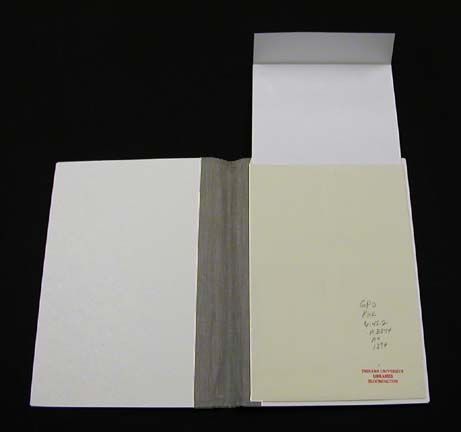
Tools Needed: |
Materials Needed: |
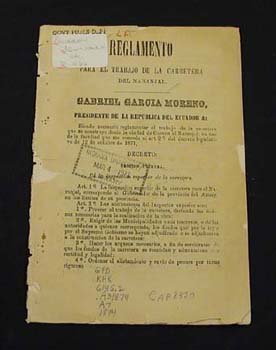 | Here we have a typical candidate, a brittle, fragile pamphlet. |
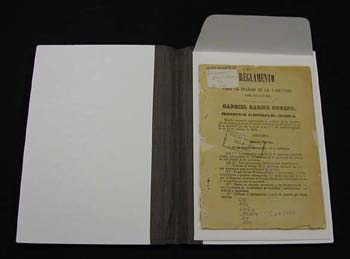 | An acid-free envelope of proper size is mounted into a pamphlet binder by means of double-sided tape. |
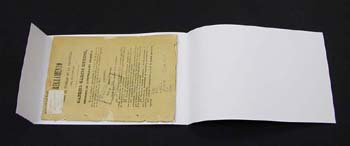 | A piece of substantial paper is cut and creased to yield two long panels each the length of the envelope and one shorter panel for the flap at the top. This top flap is actually optional; it can be omitted, but we will make a sleeve that has it. The width is such as to allow the sleeve to go in and out of the envelope without resistance, but also to allow only a minimum of lateral movement within the envelope. The paper we use is 80 lb. text weight Mohawk Superfine. |
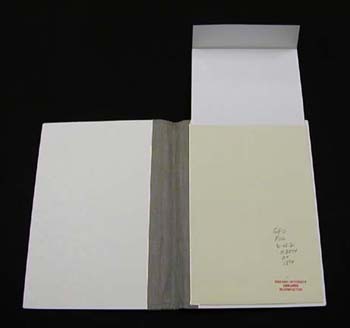 | The pamphlet is placed into the sleeve and the sleeve into the envelope. |
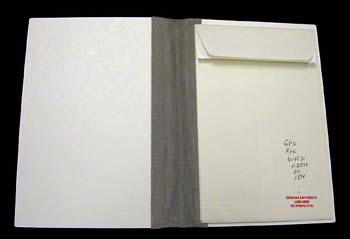 | The end result is that the pamphlet bears none of the friction generated by removing it from and replacing it to the envelope, minimizing wear and the risk of damage. |